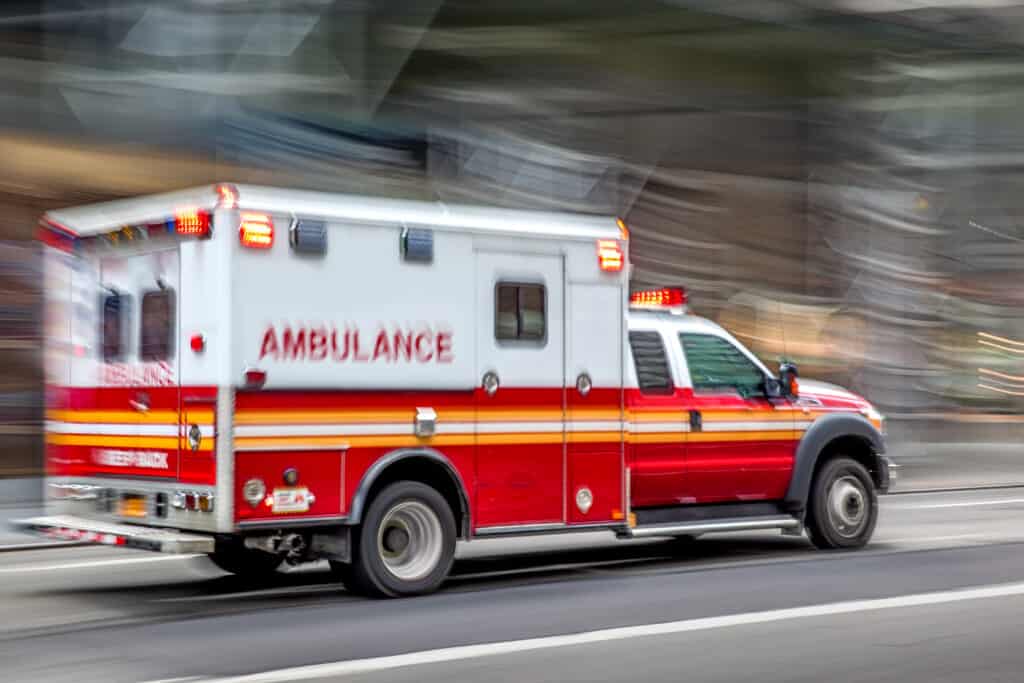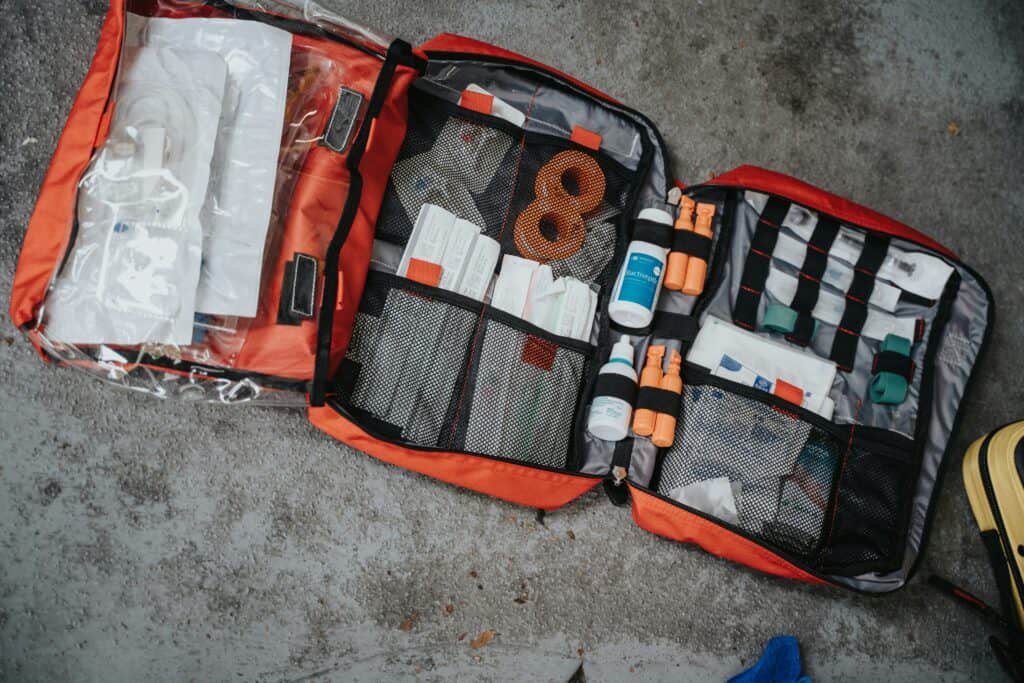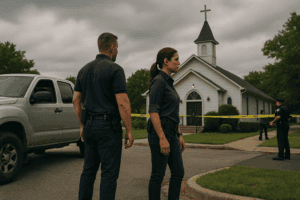Medical emergencies can occur at any given moment, even during church services.
As a gathering place for people of all ages, churches need to be prepared to handle unexpected incidents that might arise, from minor injuries to life-threatening situations.
One crucial aspect of preparedness involves having a clear plan in place to ensure the safety and well-being of all members and attendees.
Establishing guidelines and having proper procedures for dealing with accidents and emergencies can help not only provide prompt assistance to those who need it but also minimize the potential legal ramifications that could follow such incidents.
Moreover, training safety and security teams and equipping facilities with life-saving equipment, such as first aid kits and automated external defibrillators (AEDs), can make a significant difference when a crisis strikes.
In addition to preparing their facilities for medical emergencies, churches should also educate their congregants about the importance of individual awareness and responsibility.
By understanding how to recognize and respond to these unpredictable situations, members can contribute to the overall safety and well-being of their church community.
In this way, a proactive approach to emergency preparedness can help ensure that worship services continue to be safe and nurturing spaces for everyone.
Recognizing Medical Emergencies
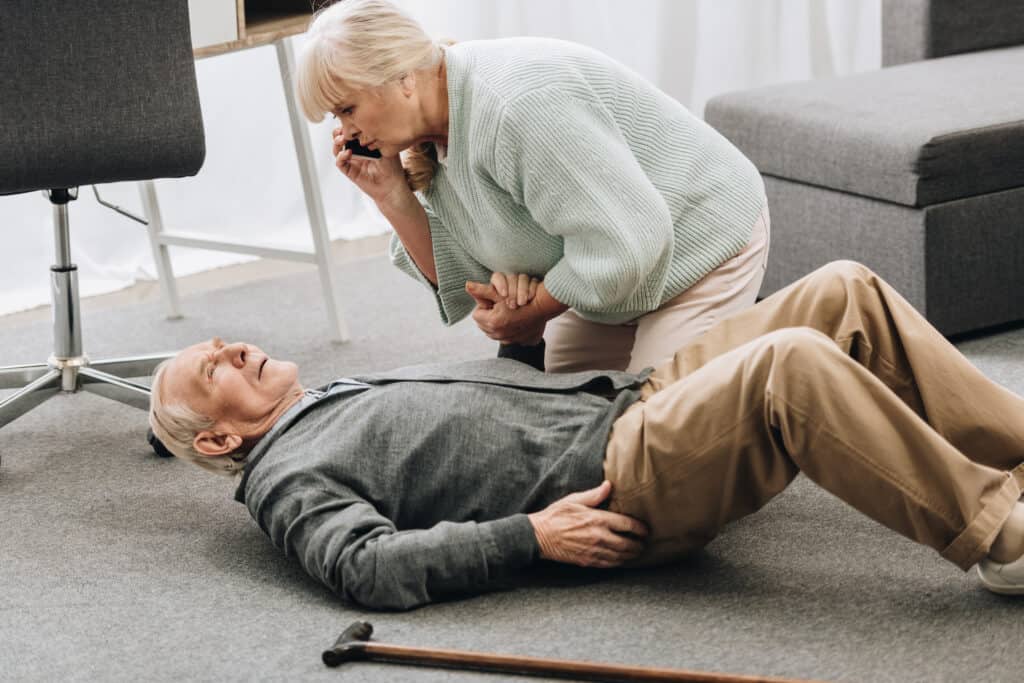
Common Medical Emergencies
Medical emergencies can occur during church services, and it is essential for church leaders and attendees to be aware and prepared to handle such situations.
Some common medical emergencies that may occur in a church setting include:
- Heart attacks: A sudden blockage of blood flow to the heart, causing chest pain and shortness of breath.
- Strokes: A disruption of blood flow to the brain, which can cause confusion, numbness, or difficulty speaking.
- Seizures: Uncontrolled electrical activity in the brain, typically resulting in muscle spasms and loss of consciousness.
- Fainting: A temporary loss of consciousness caused by a drop in blood pressure, often due to dehydration or low blood sugar.
- Allergic reactions: A severe immune response to an allergen, such as food or insect bites, which can cause difficulty breathing, swelling, and in severe cases, anaphylaxis.
- Injuries: Accidents such as falls or burns can result in minor to severe injuries, requiring immediate attention.
Signs and Symptoms to Watch For
Church attendees and leaders should watch for the following symptoms and take appropriate action if any are observed:
- Difficulty breathing: Gasping, wheezing, or struggling to catch one’s breath can indicate a medical emergency, such as a heart attack, asthma attack, or severe allergic reaction.
- Chest pain: Sudden, intense pain in the chest can be a sign of a heart attack or another serious condition, requiring prompt medical attention.
- Change in mental status: Confusion, disorientation, slurred speech, or trouble understanding others can be signs of a stroke or other neurological emergencies.
- Seizure activity: Uncontrolled spasming, loss of consciousness, or convulsions can indicate a seizure requiring immediate medical assistance.
- Signs of shock: Pale, cold, or clammy skin, rapid pulse, shallow breathing, and confusion might suggest an individual is in shock and needs urgent medical attention.
- Bleeding: Uncontrolled or heavy bleeding from an injury needs to be addressed immediately.
It is crucial for church staff and volunteers to remain vigilant and be aware of these symptoms to ensure the safety and well-being of their congregation during medical emergencies.
By recognizing the signs of emergencies early, they can take appropriate action and potentially save lives.
Creating a Church Safety Plan
A well-thought-out church safety plan can help ministries respond quickly and efficiently to medical emergencies during services.
Let’s look at the essential components of a church safety plan: creating a Safety and Security Team, establishing communication and coordination strategies, and securing church property.
Safety and Security Team
An effective Safety and Security Team is a crucial part of a church safety plan.
Ministries should recruit volunteers who are either medical professionals or have basic first-aid training.
Ensuring that the team is comprised of members from diverse backgrounds can enhance their ability to manage various types of emergencies.
The church safety plan should include regular training sessions for the Safety and Security Team to ensure they are updated on the latest safety procedures and are confident in their ability to handle medical emergencies.
Communication and Coordination
Communication is key when responding to medical emergencies during church services.
Establishing clear guidelines for notifying team members of an emergency is essential.
The plan should include designated communication channels for reporting emergencies, such as phone numbers, designated point persons, or emergency signal systems.
In addition to internal communication, the church safety plan should also include coordination with local emergency services.
This can involve having emergency service contacts readily available and collaborating with local authorities on protocols specific to the church’s location and size.
Securing Church Property
To ensure the safety of attendees during a medical emergency, it is vital to secure the church property.
This can involve implementing access control measures, such as locked doors or gated areas, and establishing designated entry and exit points for emergency services.
In the event of an evacuation, the plan should include a clear and organized evacuation procedure.
This may involve assigning roles to specific team members, marking designated assembly points, and having regular drills to ensure everyone is familiar with the evacuation process.
By incorporating these elements into a comprehensive church safety plan, ministries can effectively respond to medical emergencies and create a safer environment for their congregations.
First Aid and CPR Training
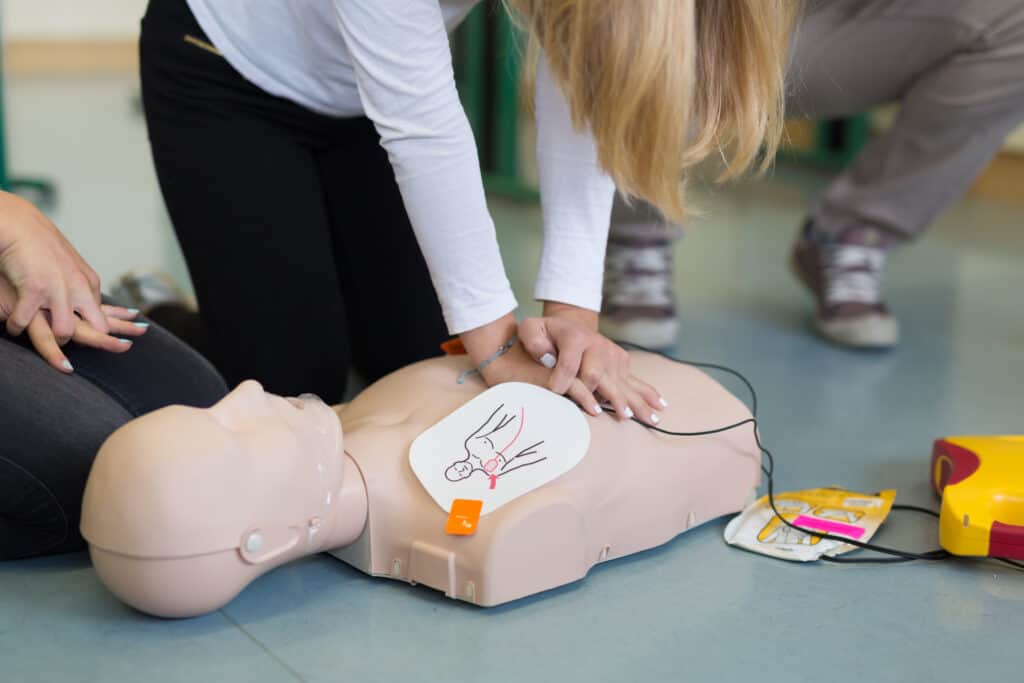
Importance of Training for Church Members
Training church members in first aid, CPR, and AED use is essential for handling medical emergencies during church services.
Quick and competent first aid can make a significant difference in medical emergencies, and incorporating medical personnel into a church’s safety and security team can help stabilize victims until professional help arrives.
Basic First Aid
Basic first aid is a set of simple and effective practices that enable church members to provide immediate care for injuries and medical emergencies.
These skills can help to alleviate pain, prevent further injury, and even save lives.
It is recommended that churches organize first aid classes for their members and volunteers, covering topics like wound care, burns, fractures, and choking.
CPR and AED Use
CPR (cardiopulmonary resuscitation) and AED (automated external defibrillator) use training can be lifesaving during cardiac emergencies in a church setting.
CPR helps maintain blood circulation and oxygen flow to the heart and brain, while an AED delivers a shock to the heart to restore its normal rhythm.
Churches should encourage members to take CPR and AED courses through organizations like the American Heart Association or the National Safety Council.
After completing these courses, volunteers can be part of a safety and security team, providing basic emergency care and stabilizing victims before professional help arrives.
It’s crucial to refresh these certifications every few years, as skills and guidelines can change over time.
Involving Medical Professionals and Emergency Responders
Role of Medical Professionals in the Church Community
Medical professionals play a vital role in the church community by providing both preventive and emergency care.
Members with backgrounds in healthcare, such as physicians, nurses, and medical technicians, can help develop a comprehensive volunteer safety and security team.
This team ensures that the church is prepared to handle medical emergencies during services.
These medically trained individuals can also provide educational resources, such as first aid and CPR training, to other church members.
This can help create a safer environment for all, as well as empower churchgoers with life-saving skills.
Working with Local Emergency Responders
Collaboration with local emergency responders is an essential aspect of managing medical emergencies at the church.
Establishing a relationship with local ambulance services and emergency responders can help ensure a quick and efficient response when emergencies occur.
One effective strategy is to communicate with local emergency response teams and provide them with information about the church’s location and layout.
This allows emergency responders to quickly navigate the facility in case of an emergency.
Additionally, consider inviting local emergency responders to the church for a walkthrough or a briefing session to familiarize them with the facility and solicit their expert advice on improving safety and emergency preparedness.
Furthermore, members of the church can attend community events or meetings with emergency responders to stay informed about updates in protocols and share thoughts on improving communication and readiness during an emergency.
Involving medical professionals and emergency responders in a church setting ensures a safe environment and better preparedness for medical emergencies.
Dealing with Emergencies and Accidents During Services
Initial Response and Assessment
When a medical emergency or accident occurs during a church service, it is crucial to quickly assess the situation and determine the appropriate course of action.
First, determine the severity of the incident and if professional medical attention is needed, immediately call 911.
Designate a church staff member or volunteer to take charge of the emergency response, ensuring they are knowledgeable in first aid procedures.
Make sure that the congregation remains calm and moves away from the area, allowing space for emergency responders to work.
Communication is vital, so inform all pertinent individuals about the situation, such as the pastor, designated emergency responders, and other staff members.
Assisting Parents and Witnesses
Assistance and support for parents and other witnesses are essential during medical emergencies or accidents.
Assign a church staff member or volunteer to accompany parents of affected children, providing emotional support and answering any questions they might have.
When dealing with adult witnesses, ensure they are supported emotionally and provide them with accurate information to alleviate concerns.
It’s important to respect people’s privacy and maintain confidentiality about the incident.
Church leadership will need to determine what, if any, information should be shared with the congregation after the event.
AEDs and Defibrillators in the Church
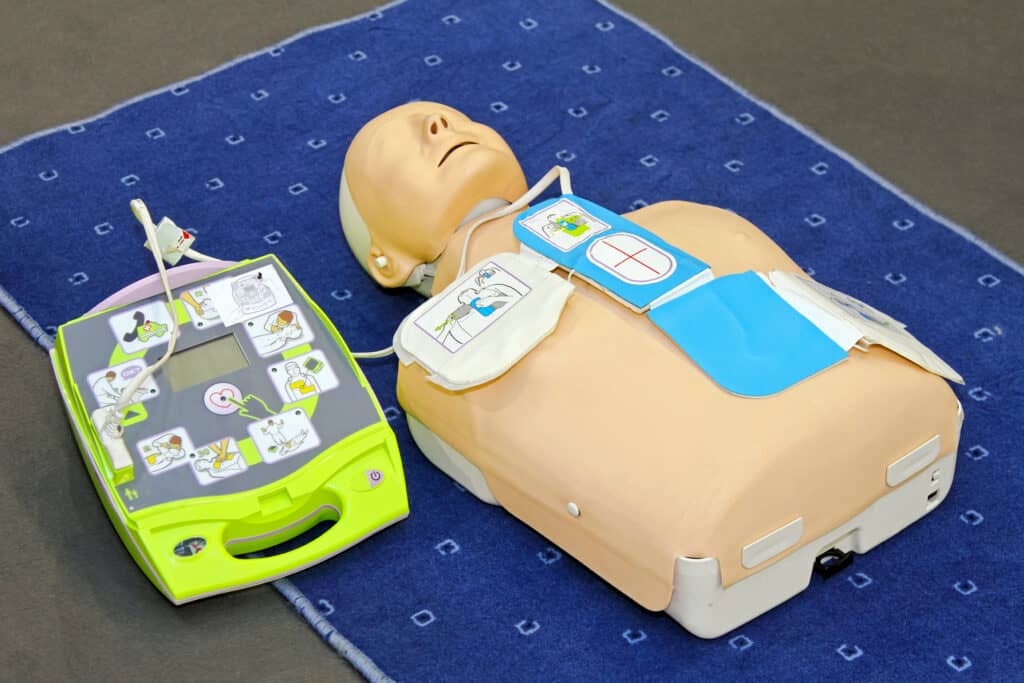
Benefits of AEDs in Church Settings
As mentioned above, Automated External Defibrillators (AEDs) can be life-saving tools during a medical emergency in church settings.
AEDs are portable devices that provide an electrical shock to the heart, restoring normal heart rhythm during a cardiac event.
The American Heart Association recommends that AEDs be available in public and/or private places where large numbers of people gather, making churches a suitable location for such devices.
AEDs can offer numerous benefits to churches:
- They can save lives during sudden cardiac arrest emergencies
- Their availability can increase the congregation’s sense of safety
- They can contribute to a church’s overall emergency preparedness
Proper Maintenance and Use of AEDs
To ensure the effectiveness of AEDs in church settings, proper maintenance and use are essential.
Churches should designate a responsible individual or team to regularly check their ministry’s defibrillators, guaranteeing they are functional and ready to use in an emergency. A few key maintenance points include:
- Checking the battery expiration date
- Ensuring that electrodes are not expired and are securely connected
- Confirming that the device’s software is up to date
- Performing regular visual inspections of the AED and its case
In addition, it is crucial for the church staff and volunteers to be trained in the proper use of AEDs. Training sessions should cover:
- Recognizing emergencies that require AED intervention
- Operating an AED effectively
- Integrating AED use with CPR techniques
By investing in AEDs and ensuring their proper maintenance and use, churches can help create safer environments and be better prepared for medical emergencies that may occur during their services.
Frequently Asked Questions
How can a church prepare for medical emergencies?
A church can prepare for medical emergencies by establishing guidelines for dealing with incidents and training staff members to handle various situations.
This includes creating a response plan, having a well-stocked first aid kit, and ensuring easy access to emergency phone numbers and medical assistance.
Moreover, identifying church members with medical expertise who can provide immediate support during emergencies is beneficial.
What should be included in a church’s first aid policy?
A church’s first aid policy should entail details about the location of first aid kits, a list of trained first aid responders, and procedures to follow in case of medical emergencies.
The policy should also outline a reporting and documentation process for incidents along with communication channels for notifying the congregation about any changes in the policies.
What are the roles of a safety and security team in a church?
A church’s safety and security team comprises members with training in handling medical emergencies.
Their roles include providing first responder services to those in need, coordinating with professional medical personnel, and ensuring that the church’s policies and guidelines are followed during an incident.
How can a church develop a comprehensive emergency plan?
Developing a comprehensive emergency plan involves identifying potential hazards, mapping evacuation routes, designating safe meeting points, and communicating the procedures to the congregation.
The plan should be reviewed and updated regularly, incorporating feedback from church members and conforming to any regulatory changes.
What medical training should church safety team members undergo?
Church safety team members should undergo basic first aid and CPR courses, as well as specialized training for specific medical emergencies, such as anaphylaxis or stroke.
Maintaining up-to-date certifications and participating in refresher courses ensures that team members stay knowledgeable and prepared.
How do you handle a medical emergency during a church service?
Handling a medical emergency during a church service requires a swift and coordinated response.
The emergency response team should assess the situation, tend to the individual in need, call for professional medical assistance, and follow the church’s established emergency protocols.
Moreover, ensuring minimal disruption to the ongoing service and providing reassurance to the congregation is essential.
Conclusion
In dealing with medical emergencies during church services, it is crucial to be prepared and have a plan in place.
One way to achieve this is by designating a comprehensive safety and security team comprised of volunteers with a background in healthcare, such as physicians, nurses, and emergency medical technicians.
Equipping the church facility with accessible first aid kits can greatly improve the response to medical incidents.
These kits should be positioned in strategic areas but kept out of reach of children.
Regular training and workshops can ensure that safety and security team members are up-to-date with essential skills and knowledge.
Apart from preparing the church staff and congregants for handling medical emergencies, it is also worthwhile to coordinate with local health and emergency services for support.
Establishing good relationships with the local fire department and medical facilities can facilitate effective communication during such incidents.
By proactively addressing potential medical emergencies, church leaders can provide peace of mind to members and ensure the safety and well-being of their congregation.
A well-prepared church is more likely to foster a sense of community and trust among its members, creating an environment conducive to worship and spiritual growth.

